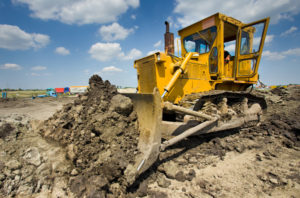 The construction industry performs numerous jobs to build structures we see around us every day. At Earthmoving Mylocation we can see the versatility of civil engineering works as an example of how human architecture has developed over time. The first step to building any structure is the preparation of land. Structures rely on their foundations to stand erect. A strong foundation is therefore required to ensure that the structure maintains its body and stands upright over a period of years and decades. Stability can be explained using the phenomenon of a nail hammered into the wall. The only reason a nail stays in place over time is because it is hammered deep into the wall. Similarly, foundations indicate the strength of structures. Civil engineering and architecture use multiple ways for construction but the land is always prepared by the same procedure:
The construction industry performs numerous jobs to build structures we see around us every day. At Earthmoving Mylocation we can see the versatility of civil engineering works as an example of how human architecture has developed over time. The first step to building any structure is the preparation of land. Structures rely on their foundations to stand erect. A strong foundation is therefore required to ensure that the structure maintains its body and stands upright over a period of years and decades. Stability can be explained using the phenomenon of a nail hammered into the wall. The only reason a nail stays in place over time is because it is hammered deep into the wall. Similarly, foundations indicate the strength of structures. Civil engineering and architecture use multiple ways for construction but the land is always prepared by the same procedure:
Earth moving or Excavation
Earth moving, earthworks and excavation are all different names for the same engineering methods to move or remove parts of the earth (soil) or rocks in order to prepare land for construction of any kind. Our aim is to provide knowledge about the type of materials, earth moving techniques and equipment used for earth moving services. We offer differentiation based on the type of materials can be done in the following ways:
Moving the topsoil
The topmost layer of soil is moved including all the vegetation and plantation.
Earth excavation
It is done by moving the soil beneath the topsoil or top layer. It can be shallow or deep, depending upon the purpose with which it is being moved.
Rock excavation
This type of excavation is carried out in order to ensure that the ground will not prove to be a hindrance in way of construction. The areas with the rocky ground or mountainous capacities are more easily doable with this service. Rock excavation requires additional equipment to break down the rocks or explosives can be used to break down mountains rocks by blasts.
Muck
Most of the places contain moisture and underground water reservoirs. When such ground is dug, the water mixes with the soil to create a muck. Muck is an essential soil that contains high level of moisture making it unfit for construction. Depending upon the moisture content, the soil is either moved and dried or removed completely.
In terms of construction, our earthworks are classified as follows:
Borrow Excavation
Usual excavations call for digging and creating a pit whereas, borrow excavation uses the earth from excavated sites to use at different sites for filling or concreting purposes.
Bridge excavation
The excavation is offered to remove any obstacles that might affect the construction of bridges, centers and supporting structures.
Channel
To avoid choking of water or sewage channels, periodic excavation is offered to ensure the maintenance of water capacity/flow.
Drainage
A potential method of diverting water flow from areas that are prone to water damage is the drainage system. The excavation for drainage, trenches, pipelines, storm drainage and any other structure made to channel water, is earth-excavation.
Dredge
Sedimentation underwater (dredge) is excavated in order to ease the waterway traffic.
Footing
Mega structures like bridges, towers and buildings require a stable foundation. The stability is provided by footings made at the base of these structures to provide them with a sound base.
Roadway excavation
The process calls for clearing land for the construction of roads. This includes clearing off the land entirely for the roads or utilising the materials for construction of some other substructure related to the same road.
Stripping
This process is much similar to topsoil excavation. Stripping involves clearing large patches of land but, these are shallow excavations. Stripping is done to clear the land for the purpose of grading.
Underground excavation
This type of excavation requires working underground using tunnels, burrows and mines. This excavation is used to construct underground railway stations and underground train tracks.
These different types of excavations require different types of equipment depending upon the nature of land and the purpose of construction. Similarly different materials are excavated and filled as per the requirements of the project.
PLEASE NOTE: THIS IS A SAMPLE TEXT TO BE USED AS INDICATIVE ONLY. THIS PAGE WILL BE FULLY CUSTOMISED TO THE EXACT SERVICES PROVIDED BY YOUR BUSINESS. THE WORD ‘MYLOCATION’ WILL BE REPLACED BY THE LOCATION OF YOUR BUSINESS.
